Permanent outdoor LED puck lights are transforming how homeowners approach seasonal lighting, architectural accenting, and year-round curb appeal.
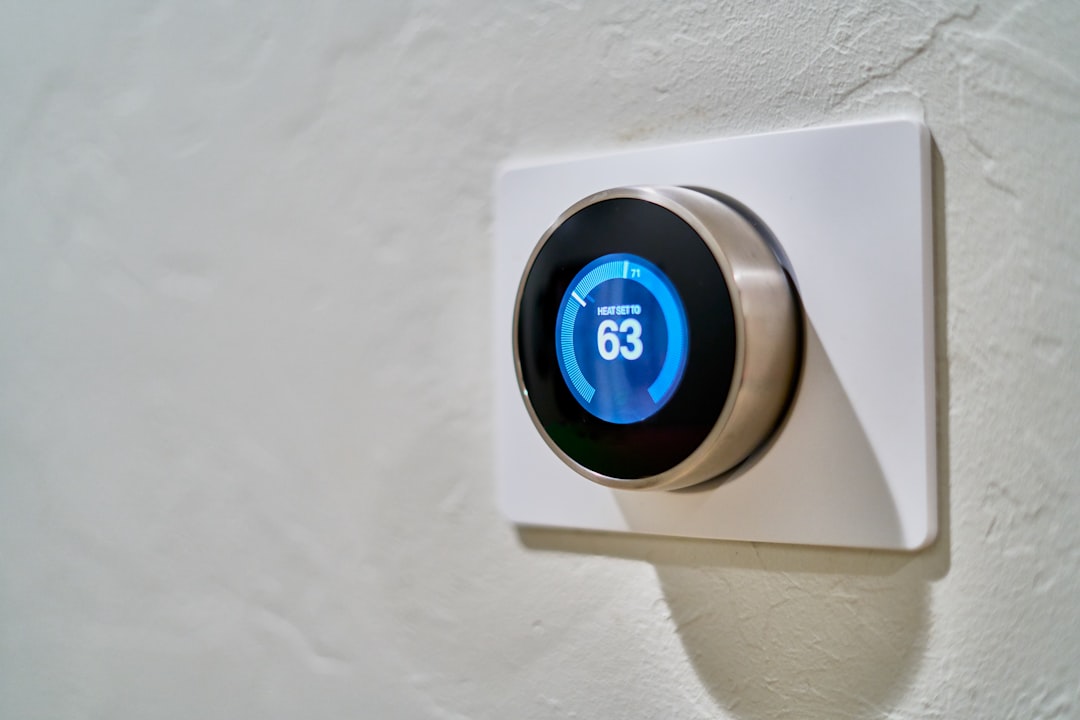
Photo by Dan LeFebvre on Unsplash
Choosing the right smart thermostat can significantly improve home comfort while saving energy and money. Two of the most popular options on the market today are the Nest fourth generation thermostat and the Ecobee Premium. Both devices offer advanced features, stylish designs, and smart home integration, but which one truly stands out? This detailed comparison explores cost, design, usability, app functionality, smart home compatibility, sensor technology, and extra features to help homeowners make an informed decision.
Cost Comparison: Upfront Investment
When considering a smart thermostat, initial cost is an important factor. Currently, the Nest fourth gen thermostat retails for around $280 on Amazon, while the Ecobee Premium is priced slightly lower at about $250. However, discounts can affect this difference; for example, the Ecobee Premium was available with a $30 discount during a recent promotion.
Though price matters, it should not be the sole deciding factor. A smart thermostat is a long-term investment, often staying on the wall for a decade or more. Homeowners should prioritize features, ease of use, and integration capabilities over just the initial price to ensure satisfaction over time.
Design and User Interaction
The aesthetic and usability of a thermostat play a big role in everyday satisfaction. The Nest fourth gen is offered in three finishes: gold, silver, and obsidian (a dark black). The Ecobee Premium, on the other hand, comes in a single brushed nickel color. For this comparison, the silver Nest was chosen to align more closely with Ecobee’s look.
While the Nest’s curved glass display gives it a sleek, watch-like appearance, it suffers from significant glare and reflections that can make viewing difficult in bright rooms or from certain angles. This challenge is particularly noticeable when standing close or looking down at the Nest, where reflections can obscure the screen entirely.
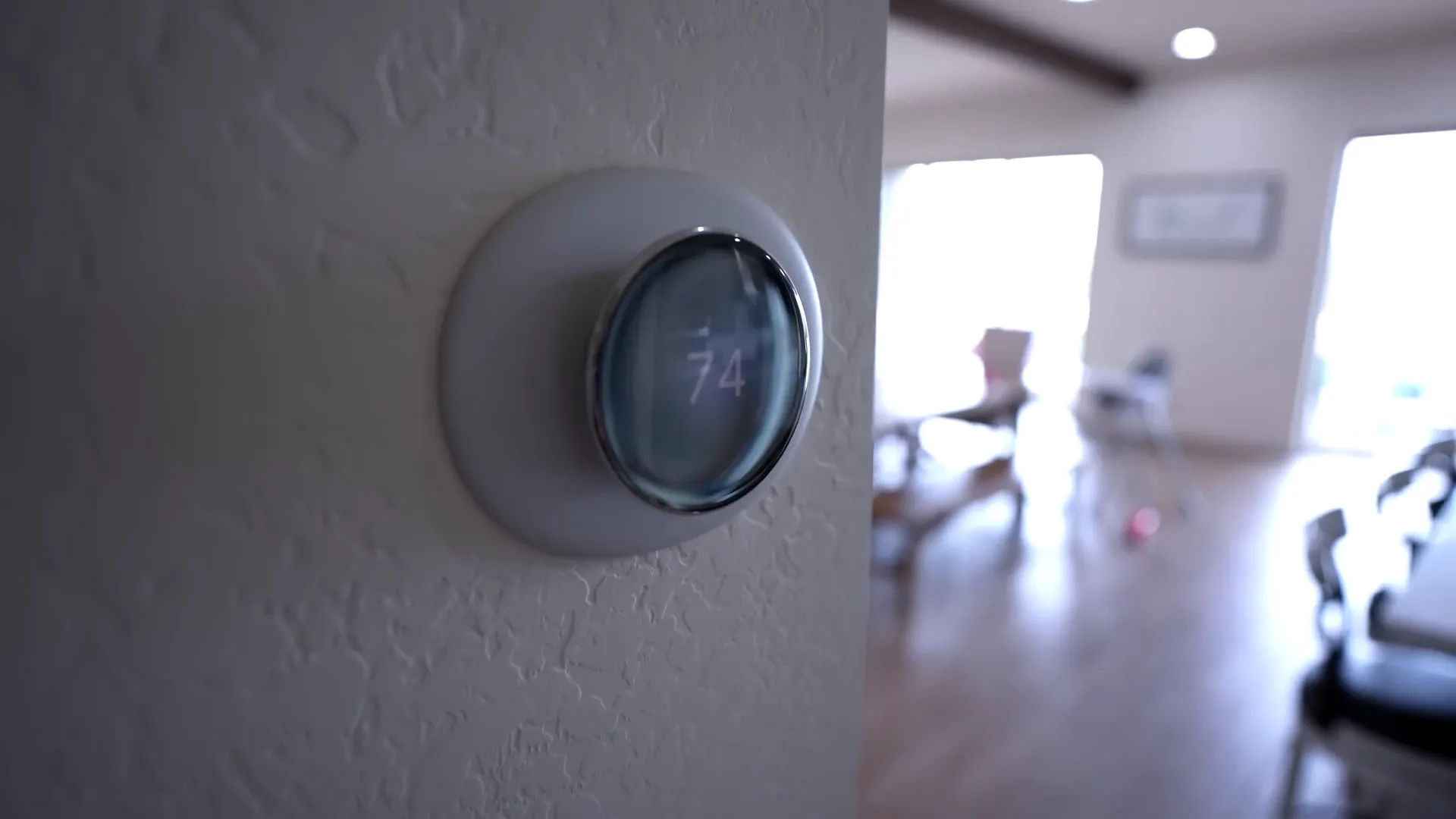
In contrast, the Ecobee Premium features a flat touchscreen display that minimizes reflections, making it easier to read from multiple angles and lighting conditions. Additionally, Ecobee offers adjustable screen brightness, allowing users to tailor visibility to their environment, whereas the Nest’s brightness is fixed and can appear washed out in well-lit rooms.
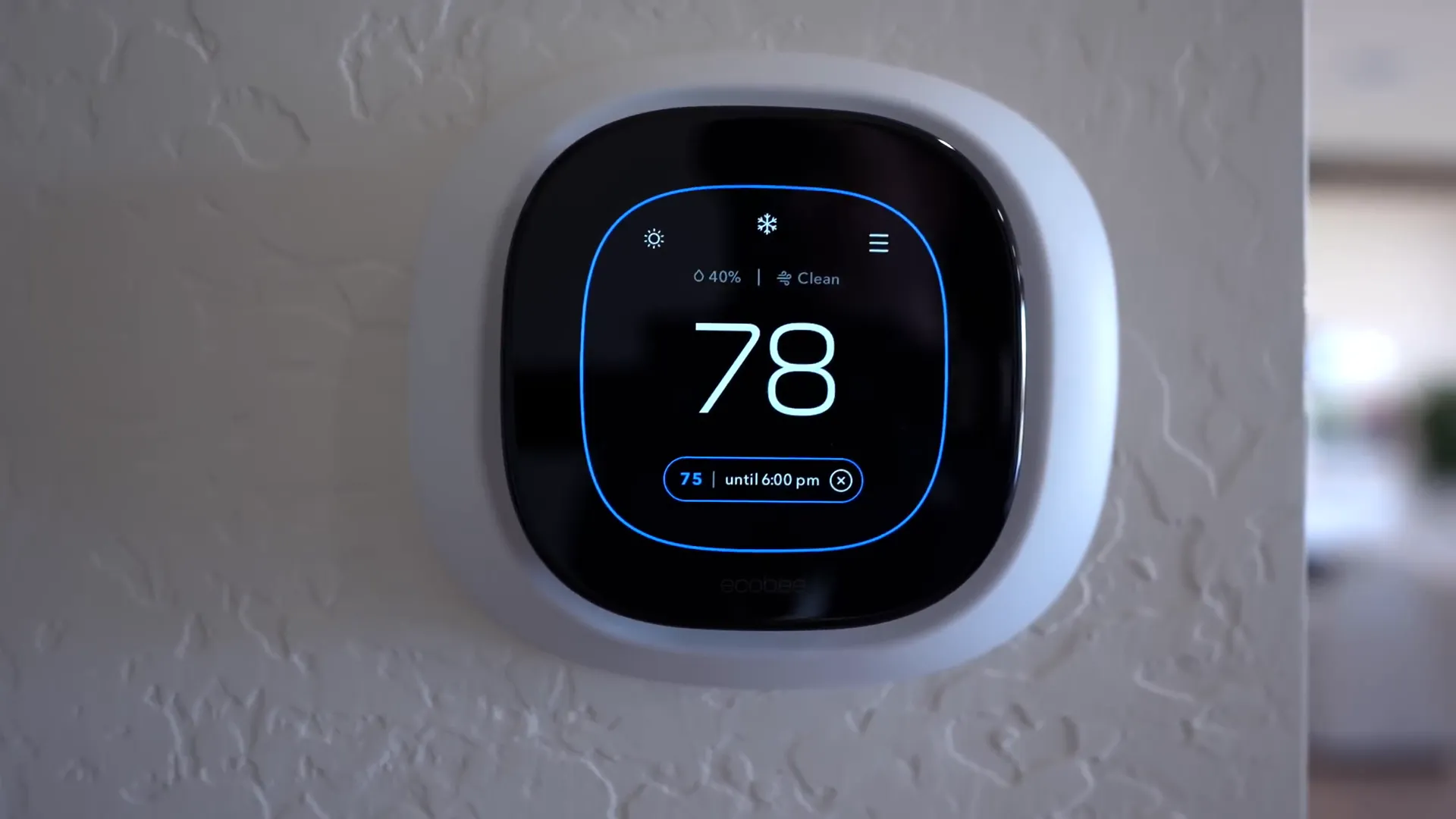
When it comes to controls, the Ecobee’s touchscreen interface is intuitive and straightforward. Adjusting the temperature involves tapping the current temperature, using on-screen arrows, and confirming the setting with a tap. Navigating through settings is similarly user-friendly.
The Nest thermostat retains its classic design with a rotating and pressing ring around the display for adjustments. While this method reduces fingerprints on the screen, it can slow down menu navigation compared to the touchscreen approach. However, for quick temperature changes — the most common interaction — both thermostats perform equally well.
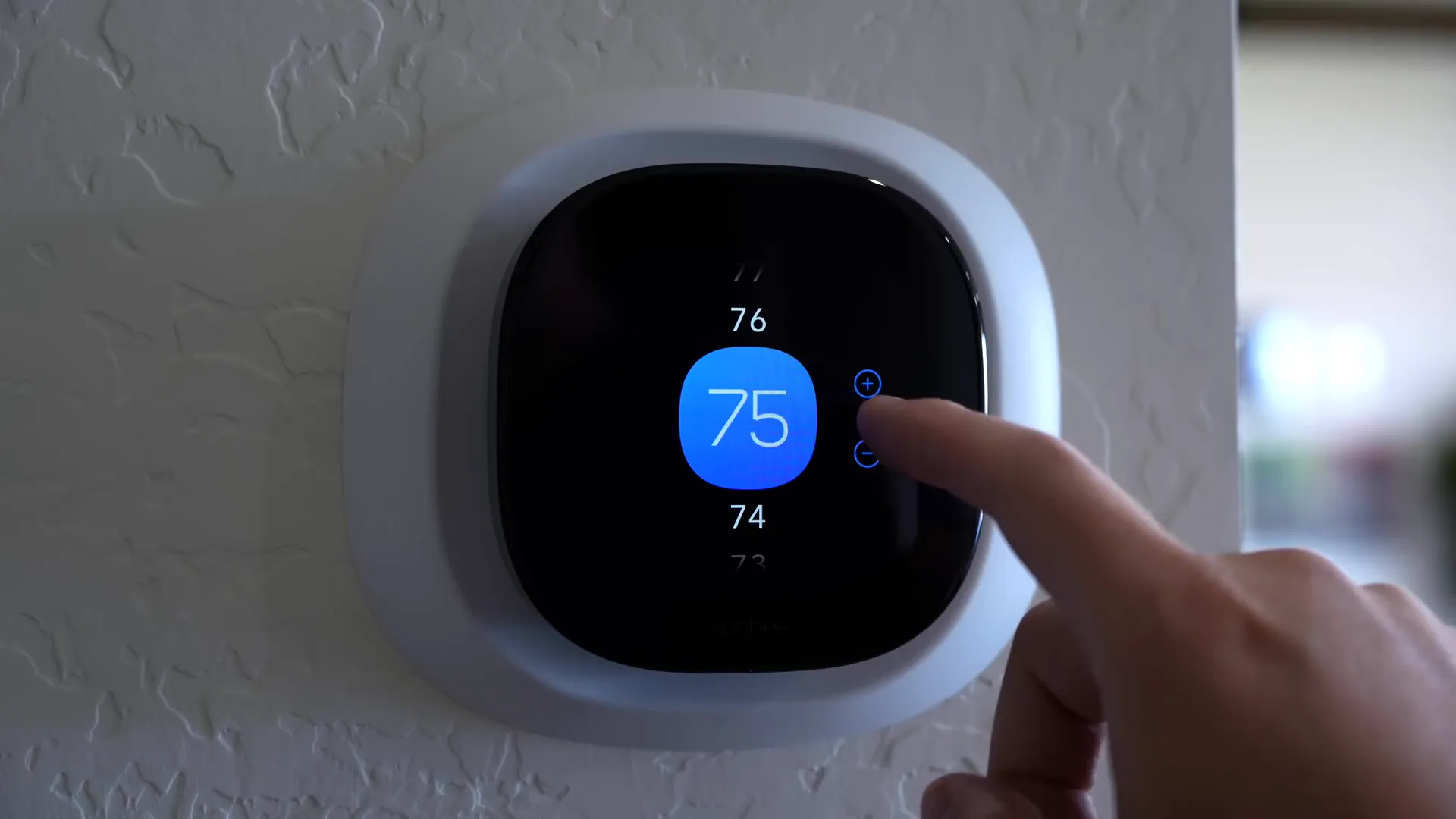
Both models include a trim plate to cover any wall damage from previous installations, ensuring a clean, finished look regardless of the existing wall condition.
Design Winner: Ecobee Premium, for its superior screen visibility and user-friendly touchscreen controls.
Smartphone Apps and Scheduling Features
Smart thermostats rely heavily on their companion apps for scheduling, remote control, and energy monitoring. The Ecobee Premium uses the dedicated Ecobee app, while the Nest fourth gen thermostat operates exclusively through the Google Home app — it is not compatible with the older Nest app.
Both apps allow users to adjust temperatures, create presets, and set schedules with relative ease. However, there are some notable differences:
- Scheduling granularity: Ecobee permits temperature changes as close as 30 minutes apart, ideal for fine-tuning comfort during transitional periods like early mornings. Nest requires at least 60 minutes between changes, which can limit flexibility.
- Learning capabilities: Both thermostats can learn user habits and adjust automatically, but Nest introduces a “suggestions” mode. This mode notifies users when a manual temperature change might warrant updating the schedule, offering a balance between automation and user control. Ecobee’s learning is binary (on or off) and lacks this nuanced approach.
- Energy usage dashboards: Nest’s dashboard provides basic data, showing system run time in minutes per hour. Ecobee offers a more detailed dashboard with precise system activity times, temperature trends via line graphs, and local weather integration.
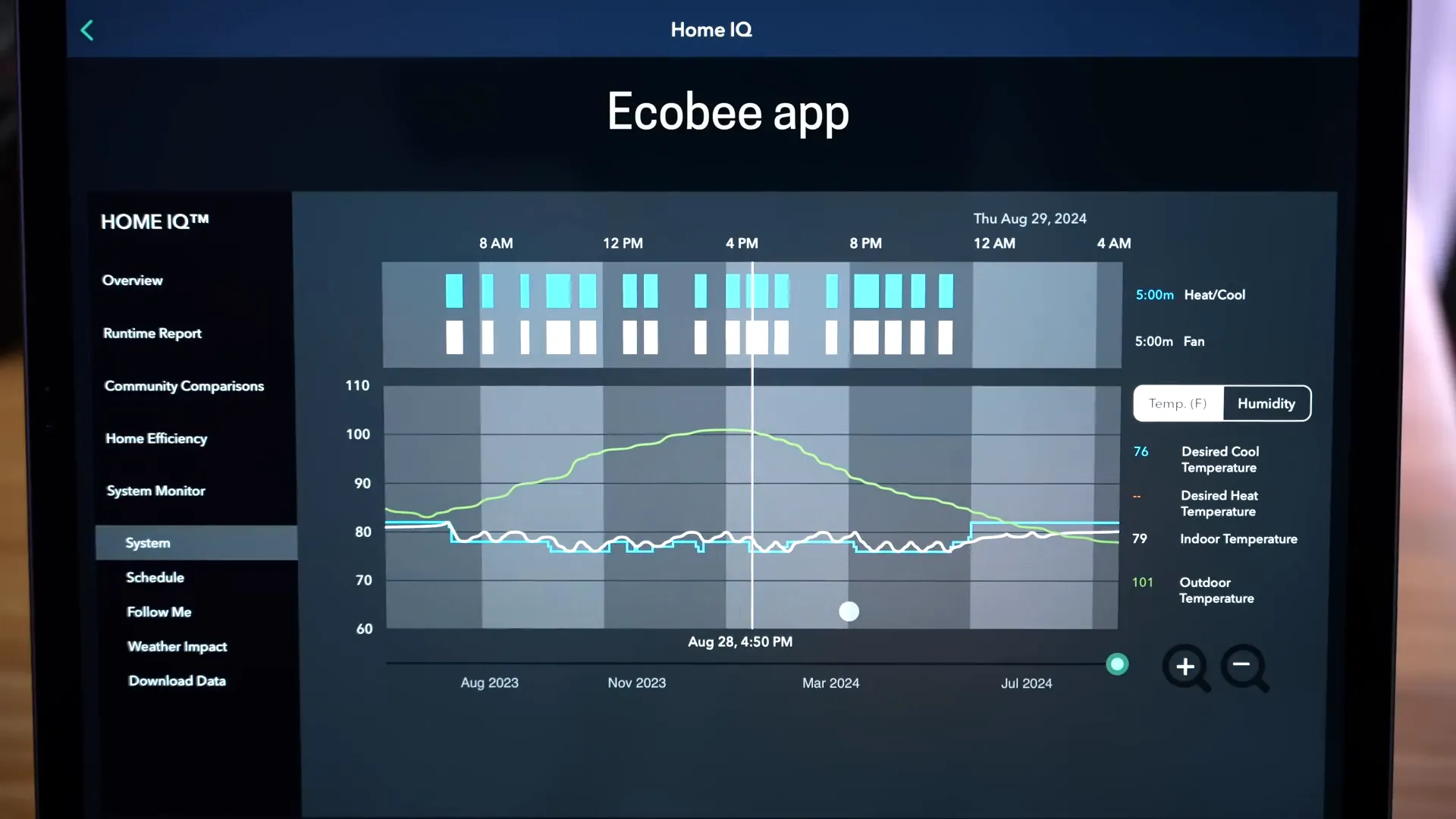
App Experience Verdict: It’s a tie. Nest’s learning suggestions add intelligent convenience, whereas Ecobee excels in scheduling precision and data visualization.
Smart Home Integration
Integration with smart home ecosystems is a crucial factor for modern homeowners. The Nest fourth gen thermostat proudly supports Matter, a universal smart home standard designed to simplify device connectivity. The box even advertises this feature prominently.
However, setup requires the Google Home app exclusively; it cannot be configured directly via the thermostat or through the Nest app. This reliance on a single app somewhat contradicts the promise of Matter’s app-agnostic convenience.
Once set up, the Nest thermostat can be added to platforms like Apple Home and Home Assistant via Matter, but the controls available through these integrations are minimal — only basic temperature adjustments and mode changes (cool, heat, off) are supported. Features like fan control, preset temperatures, and remote sensor data are missing.
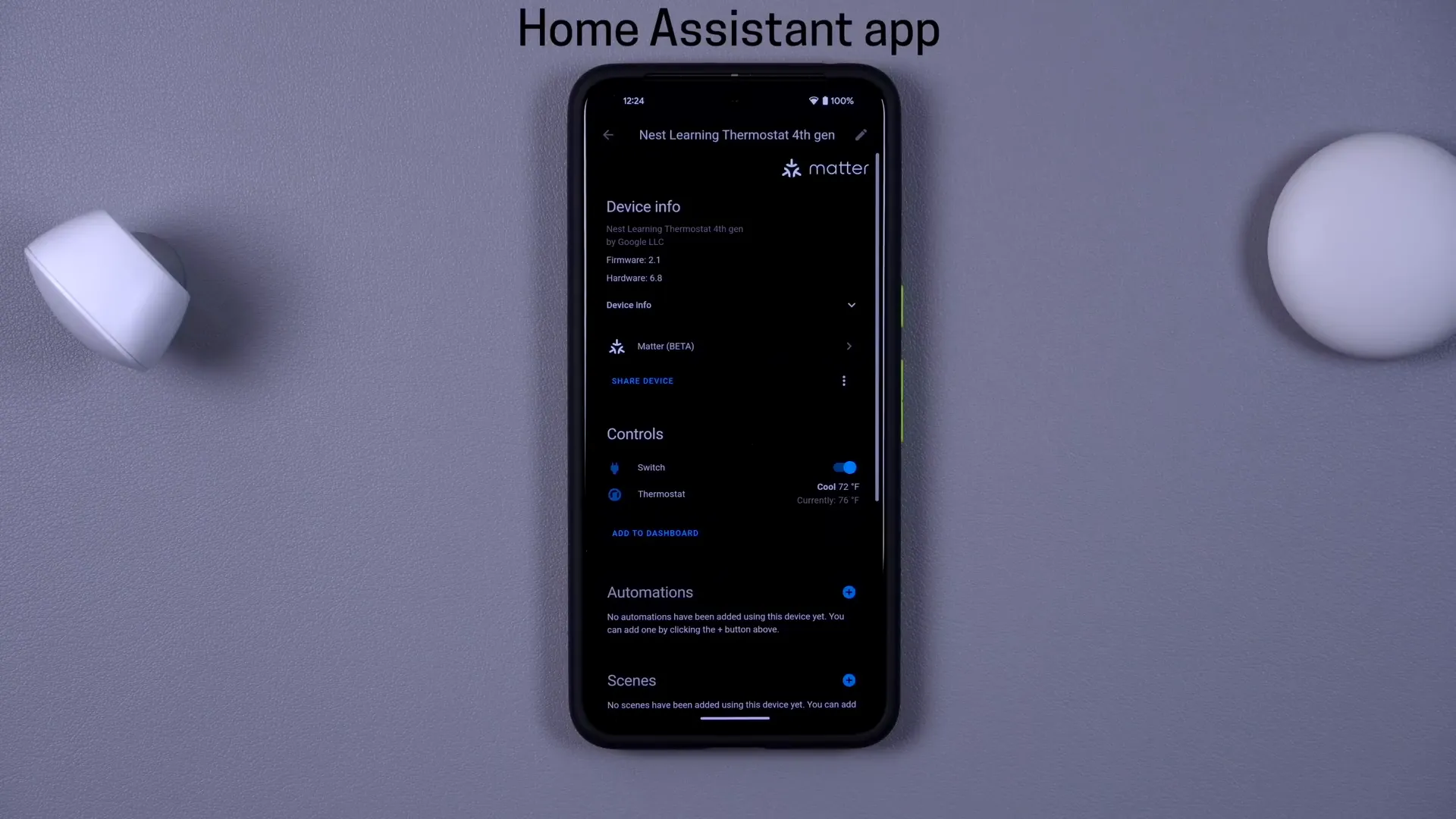
Ecobee’s smart home integration, especially through Apple HomeKit and Home Assistant, offers far more comprehensive control. This includes access to motion and occupancy sensors, temperature presets, fan settings, and remote temperature sensor readings. Moreover, Ecobee’s HomeKit integration works locally without cloud dependency and can be set up without the app, using the thermostat’s touchscreen directly.
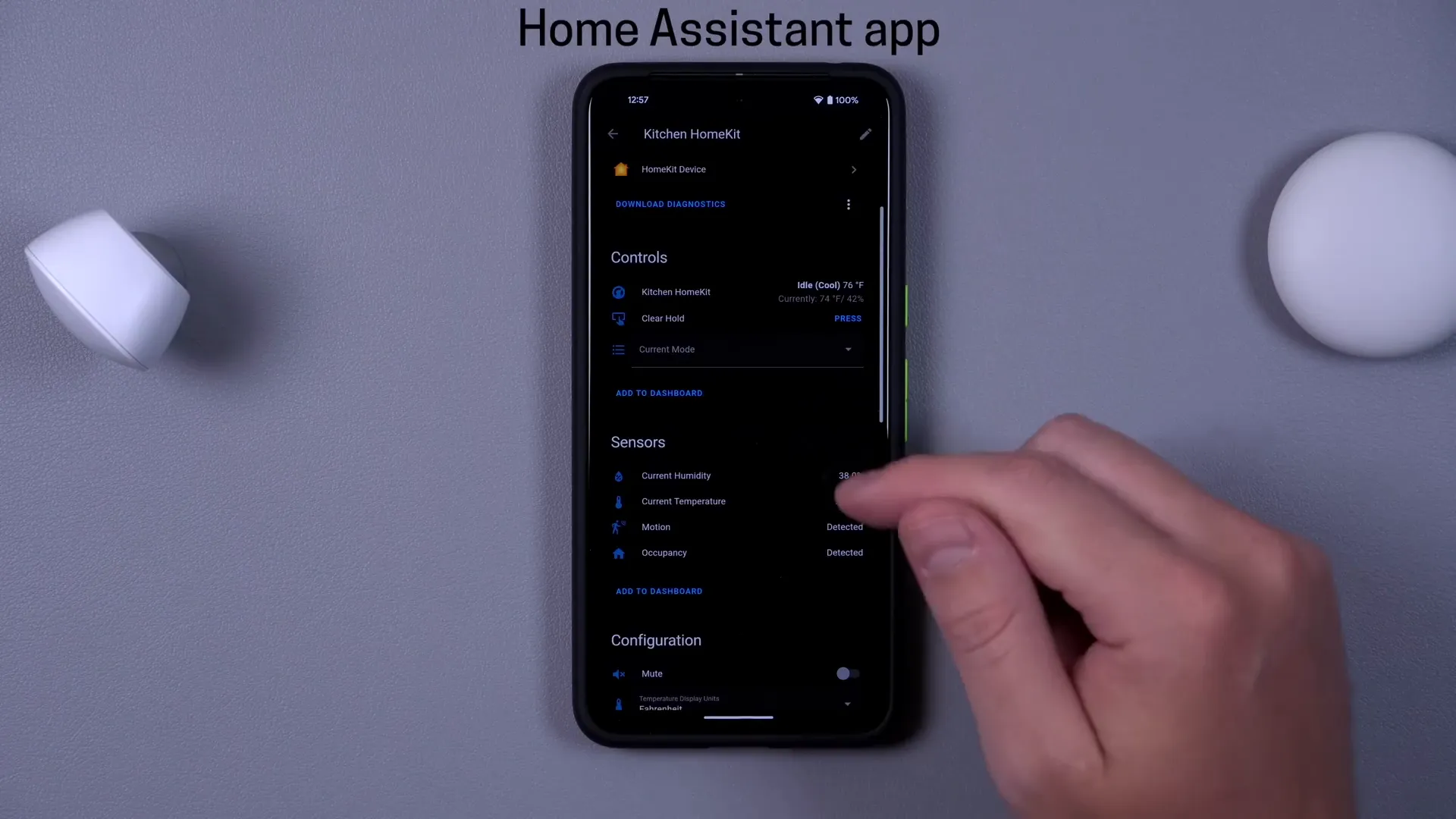
Smart Home Integration Winner: Ecobee Premium, thanks to richer features, local control, and more seamless smart home compatibility.
Remote Temperature Sensors and Occupancy Detection
Both thermostats include remote temperature sensors to help optimize comfort throughout the home. The Nest thermostat has improved its sensor functionality by averaging temperatures between the thermostat and sensors and allowing users to select which sensors apply to specific schedule presets.
Ecobee, however, has offered these features for years and adds occupancy detection in its remote sensors. This enables “Follow Me” mode, which adjusts temperature based on rooms currently occupied, enhancing energy efficiency and comfort. Nest’s sensors lack occupancy detection, limiting their effectiveness in dynamic home environments.
Remote Sensor Winner: Ecobee Premium, for advanced occupancy-aware temperature control.
Additional Features to Consider
- C-Wire Compatibility: Some homes lack a common wire (C-wire) necessary to power smart thermostats. Nest fourth gen works without a C-wire using a rechargeable battery, making it suitable for homes without this wiring. Ecobee requires a C-wire for optimal operation.
- Temperature Swing Settings: This setting controls how much the temperature must deviate before the HVAC system turns on, affecting system cycling and longevity. Nest has a fixed 1-degree swing, while Ecobee allows users to customize this, with 2 degrees being a popular setting to reduce wear on equipment.
- Farsight Feature (Nest Only): Nest’s Farsight displays useful information like the time or weather from across the room and changes to more detailed info when approached. However, if the Nest doesn’t detect presence correctly, the display can turn off unexpectedly, which some users may find frustrating.
- Ecobee Extras: Ecobee can display its own doorbell feed and includes built-in voice assistants. While these features may not be essential for all users, they add versatility for smart home enthusiasts.
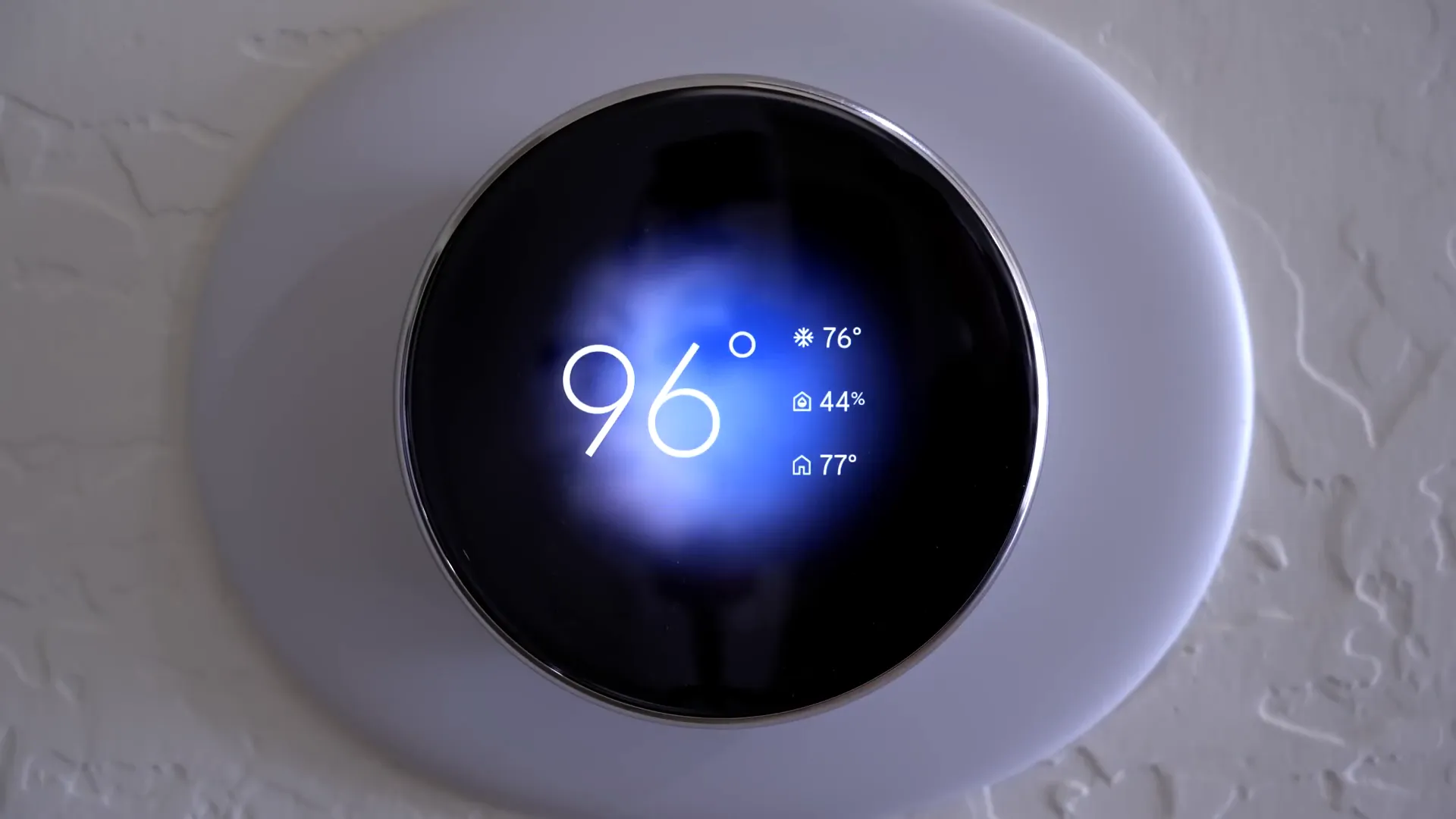
Final Verdict: Which Smart Thermostat Should You Choose?
Both the Nest fourth gen and Ecobee Premium offer compelling features, but their strengths differ. The Nest thermostat appeals to those who want a distinctive design, smart schedule suggestions, or need a thermostat that works without a C-wire. Its Farsight display and learning suggestions provide a modern touch for users who prefer a blend of automation and control.
However, the Ecobee Premium stands out as the more practical and versatile choice for most homeowners. Its touchscreen interface, superior screen visibility, customizable scheduling, occupancy-aware remote sensors, and robust smart home integration provide a more comprehensive and user-friendly experience. Ecobee’s local HomeKit support and detailed energy insights make it especially attractive for smart home enthusiasts seeking deeper control.
For those looking for more budget-friendly options, Ecobee also offers less expensive models, though some features like built-in occupancy detection may be missing and require use of remote sensors.
Ultimately, the Ecobee Premium emerges as the smarter and more adaptable thermostat, perfect for upgrading home comfort and energy management.
Frequently Asked Questions
Does the Nest fourth gen thermostat require a C-wire?
No. The Nest fourth gen thermostat includes a rechargeable battery and can operate without a C-wire, making it suitable for homes lacking this wiring.
Can I control the Nest thermostat without the Google Home app?
No. The Nest fourth gen thermostat requires the Google Home app for setup and control; it is not compatible with the older Nest app or direct thermostat-only setup.
Do Ecobee remote sensors detect occupancy?
Yes. Ecobee’s remote temperature sensors include occupancy detection, enabling features like Follow Me mode which adjusts temperature based on which rooms are occupied.
Which thermostat has better smart home integration?
Ecobee Premium offers more comprehensive smart home integration, including local HomeKit support, detailed control via Home Assistant, and rich sensor data access. Nest supports Matter but has limited functionality through third-party integrations.
Can I adjust how sensitive the thermostat is to temperature changes?
Ecobee allows users to set the temperature swing threshold, controlling how much the temperature must deviate before the system activates. Nest has a fixed 1-degree swing that cannot be changed.
















